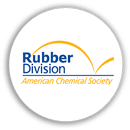ASTM E1530: Standard Test Method for Evaluating the Thermal Conductance of Materials Using a Heat Flow Meter
ASTM E1530 is a standardized test method developed by ASTM International to measure the thermal conductance and resistance of materials, including rubber and plastic, using a heat flow meter apparatus. Since these materials play a critical role in thermal insulation, heat dissipation, and product durability, understanding their thermal performance is essential for industries like automotive, aerospace, electronics, and construction.
By following ASTM E1530, manufacturers and researchers can obtain precise and repeatable measurements of a material’s ability to transfer or resist heat, ensuring optimal thermal performance and energy efficiency.
Purpose and Importance of ASTM E1530
The ASTM E1530 test method is designed to:
- Measure Thermal Conductance: Determines how efficiently heat transfers through materials like rubber and plastic.
- Evaluate Thermal Resistance: Identifies a material’s ability to resist heat flow, crucial for insulation performance.
- Ensure Material Consistency: Helps manufacturers maintain uniform thermal properties across different production batches.
- Optimize Rubber & Plastic Applications: Provides data for selecting materials with superior heat management properties.
- Comply with Industry Standards: Ensures rubber and plastic materials meet regulatory and safety requirements in various industries.
How ASTM E1530 Affects Rubber and Plastic
Rubber and plastic are widely used in thermal insulation and heat management applications, and ASTM E1530 testing provides insights into their performance under different thermal conditions.
1. Impact on Rubber Materials
- Heat Resistance: Determines how well rubber materials withstand high temperatures without degrading.
- Thermal Insulation: Evaluates rubber’s ability to prevent heat transfer, essential for seals, gaskets, and vibration dampeners.
- Durability in Harsh Environments: Helps assess rubber aging when exposed to extreme heat or cold.
- Automotive and Aerospace Applications: Ensures rubber components in engines and aircraft maintain functionality.
2. Impact on Plastic Materials
- Heat Dissipation in Electronics: Helps identify plastics with low thermal conductivity for use in heat-resistant enclosures.
- Thermal Insulation for Construction: Ensures PVC, polyethylene, and polystyrene materials provide adequate insulation in buildings.
- Plastic Manufacturing and Processing: Aids in selecting plastic formulations that can withstand injection molding and extrusion processes without warping.
- Sustainability and Energy Efficiency: Helps reduce energy consumption by improving the thermal performance of plastic insulation materials.
Key Test Procedures in ASTM E1530
ASTM E1530 employs a heat flow meter apparatus to measure a material’s thermal properties under controlled conditions. The key testing steps include:
1. Sample Preparation
- A flat, uniform sample of rubber or plastic is prepared, typically 25 mm to 50 mm in diameter.
- The sample surfaces are cleaned to remove contaminants that may affect heat transfer.
2. Test Setup
- The sample is placed between two plates in the heat flow meter apparatus.
- The top plate is heated to a controlled temperature, while the bottom plate remains cool, creating a temperature gradient.
3. Heat Flow Measurement
- The apparatus measures heat flux (W/m²) through the sample using heat flow sensors.
- The temperature difference between the plates is recorded to calculate thermal conductance and resistance.
4. Calculation of Thermal Properties
- Thermal Conductance (C) is determined by dividing the heat flux by the temperature difference.
- Thermal Resistance (R) is calculated as the reciprocal of thermal conductance.
- Thermal Conductivity can be derived if the sample thickness is known.
Interpreting ASTM E1530 Test Results for Rubber and Plastic
- High Thermal Conductance: Indicates that the material transfers heat efficiently, which is beneficial for heat dissipation applications (e.g., plastics in electronics and automotive).
- Low Thermal Conductance (High Resistance): Suggests the material is a good thermal insulator, making it suitable for gaskets, seals, and insulation panels.
- Degradation at High Temperatures: If the material softens or loses mechanical integrity, it may not be suitable for high-heat environments like engine components.
Applications of ASTM E1530 in Rubber & Plastic Industries
ASTM E1530 is widely used in industries that require precise thermal performance analysis of rubber and plastic materials:
- Automotive & Aerospace: Tests rubber seals, gaskets, and vibration dampeners exposed to engine heat and friction.
- Electronics & IT: Ensures plastic enclosures provide heat resistance and electrical insulation.
- Construction & Insulation: Evaluates plastic-based insulation materials, like polystyrene foam and PVC window seals.
- Medical & Healthcare: Helps in selecting rubber and plastic components for temperature-sensitive medical devices.
Benefits of ASTM E1530 for Rubber and Plastic
- Enhances Energy Efficiency: Helps select materials that improve thermal insulation and reduce energy consumption.
- Optimizes Heat Management: Supports the development of heat-resistant rubber and plastic solutions for electronics, automotive, and construction applications.
- Ensures Material Quality: Guarantees consistent thermal performance across different manufacturing batches.
- Prevents Material Degradation: Identifies temperature limits where rubber and plastic may break down or soften.








